
Fluorescent lamps are also called fluorescent lamps. Fluorescent lamps are a cold light source that excite fluorescent substances to emit light through high voltage. The traditional fluorescent lamp is a low-pressure mercury lamp, which uses low-pressure mercury vapor to release ultraviolet rays after being energized, thereby causing the phosphor to emit visible light. Therefore, it belongs to a low-pressure arc discharge light source. In 1974, Philips of the Netherlands first developed a phosphor that would emit red, green and blue light sensitive to human eyes. The development and application of three primary colors (also known as three primary colors) phosphors is an important milestone in the development of fluorescent lamps.
How The fluorescent lights working
 First, the inner wall of the fluorescent lamp is coated with fluorescent powder. At the same time, its management is also filled with 400 to 500 Pa of argon and a small amount of mercury. When the electricity is turned on, the mercury atoms in the tube are excited, thereby radiating ultraviolet rays. The excess energy can be released, so that the phosphor inside the tube can absorb ultraviolet radiation and emit light. In addition, the color of the fluorescent powder is different from the refracted light. Most of the electrical energy consumed by fluorescent lamps is used to generate ultraviolet light, so fluorescent lamps are an energy-saving light source. Fluorescent lamp lighting method. In order to illuminate a fluorescent lamp, an electrode coated with an emitter (electron emitting substance) should be preheated with a current to make it easy to emit electrons. According to different starter methods, they can be roughly divided into three types: “starter-type lighting circuit”, “quick starter-type lighting circuit”, and “inverter-type (electronic) lighting circuit”. The ballasts (luminaires) and fluorescent tubes used in “starter-type lighting circuits” and “quick starter-type lighting circuits” are different.
First, the inner wall of the fluorescent lamp is coated with fluorescent powder. At the same time, its management is also filled with 400 to 500 Pa of argon and a small amount of mercury. When the electricity is turned on, the mercury atoms in the tube are excited, thereby radiating ultraviolet rays. The excess energy can be released, so that the phosphor inside the tube can absorb ultraviolet radiation and emit light. In addition, the color of the fluorescent powder is different from the refracted light. Most of the electrical energy consumed by fluorescent lamps is used to generate ultraviolet light, so fluorescent lamps are an energy-saving light source. Fluorescent lamp lighting method. In order to illuminate a fluorescent lamp, an electrode coated with an emitter (electron emitting substance) should be preheated with a current to make it easy to emit electrons. According to different starter methods, they can be roughly divided into three types: “starter-type lighting circuit”, “quick starter-type lighting circuit”, and “inverter-type (electronic) lighting circuit”. The ballasts (luminaires) and fluorescent tubes used in “starter-type lighting circuits” and “quick starter-type lighting circuits” are different.
Status of the fluorescent lamp market
 Because the fluorescence itself contains mercury. The boiling point of mercury is very low, and it can evaporate at normal temperature. After the broken fluorescent tube is broken, it immediately emits mercury vapor to the surroundings, which can instantly make the mercury concentration in the surrounding air reach 10-20 mg per cubic meter. The maximum allowable concentration in air is 0.01 mg per cubic meter. It can also flow with the air. Once the mercury entering the human body exceeds a certain threshold, it will destroy the human central nervous system and cause great harm to the body. After being discarded, the electric light source was randomly discarded, and the rupture caused mercury to diffuse into the air, endangering human health and polluting the environment. Because recycling is difficult and the value of recycling is too low, and it has many other disadvantages, the only way is to eliminate it. With the development of human lamp civilization and the continuous shortage of earth resources, human beings have pushed the light source to further development. Therefore, the emergence of LED energy-saving lamps will replace incandescent lamps and second-generation fluorescent lamps.
Because the fluorescence itself contains mercury. The boiling point of mercury is very low, and it can evaporate at normal temperature. After the broken fluorescent tube is broken, it immediately emits mercury vapor to the surroundings, which can instantly make the mercury concentration in the surrounding air reach 10-20 mg per cubic meter. The maximum allowable concentration in air is 0.01 mg per cubic meter. It can also flow with the air. Once the mercury entering the human body exceeds a certain threshold, it will destroy the human central nervous system and cause great harm to the body. After being discarded, the electric light source was randomly discarded, and the rupture caused mercury to diffuse into the air, endangering human health and polluting the environment. Because recycling is difficult and the value of recycling is too low, and it has many other disadvantages, the only way is to eliminate it. With the development of human lamp civilization and the continuous shortage of earth resources, human beings have pushed the light source to further development. Therefore, the emergence of LED energy-saving lamps will replace incandescent lamps and second-generation fluorescent lamps.
The decisive factor for LED lights to replace fluorescent lights
 1. Brightness change caused by ambient temperature
1. Brightness change caused by ambient temperature
Normal fluorescent lamps cause changes in brightness due to changes in ambient temperature. This is due to the vaporization of mercury in the glass tube (pressure changes with changes in ambient temperature. If the mercury vapor pressure changes, the efficiency of ultraviolet generation changes and the luminous flux also changes. The pressure of the enclosed gas and the mercury vaporization. As the pressure ratio changes, the starting characteristics also change.
2. Characteristics of winter (at low temperature)
Fluorescent lamps can be used at a temperature of 20C to 40C, and can exhibit the best characteristics. After lighting in summer, it can reach the optimal brightness immediately, but in winter, it takes 5 ^ ~ 6 minutes to reach a stable brightness. In all lamps, it is more difficult to light in cold places than in warm places, and the light is dim or accompanied by flicker. The brightness will gradually increase as the temperature rises.
3. Speed of light decay characteristics
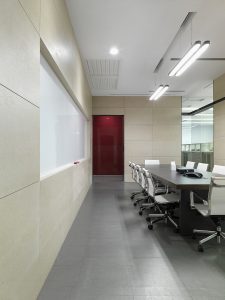 During the lighting process of a fluorescent lamp, the luminous flux is gradually reduced due to blackening and degradation of fluorescent substances. The loss rate of the lamp has almost no change in power. Different types of lamps are different. The greater the tube wall load (power per unit area), the greater the decrease in luminous flux. In addition, various phosphors have different degrees of degradation. A three-primary fluorescent lamp that emits light by mixing three to four phosphors has a slight change in light color as well as a decrease in brightness. But the color rendering is almost unchanged.
During the lighting process of a fluorescent lamp, the luminous flux is gradually reduced due to blackening and degradation of fluorescent substances. The loss rate of the lamp has almost no change in power. Different types of lamps are different. The greater the tube wall load (power per unit area), the greater the decrease in luminous flux. In addition, various phosphors have different degrees of degradation. A three-primary fluorescent lamp that emits light by mixing three to four phosphors has a slight change in light color as well as a decrease in brightness. But the color rendering is almost unchanged.
4. Disadvantages or harm of fluorescent lamps
a. Strobe
Strobe is due to the use of alternating current in fluorescent lamps, and a short, unobservable flicker occurs when the current is commutated. It occurs at twice the frequency of the alternating current, ie, 100 Hz. The flickering of the lights makes the ciliary muscles continually contract and relax to adapt to the environment. Constant tension exercise for a long time makes the ciliary muscles tired, and the eyes appear sour and painful.
b. Infrasound
Fluorescent lamp ballasts will oscillate and emit infrasound waves during operation. Infrasound is a band that humans cannot perceive. Long-term exposure to infrasound radiation can interfere with people’s nerves, causing symptoms such as dizziness, nausea and even depression.
c. Mercury pollution

Fluorescent tubes contain heavy metals such as mercury and fluorescent powder, which can cause harm to the environment and human body. Mercury is commonly found in fluorescent lamps as a necessary intermediate for phosphors to emit light. Prolonged work will increase the temperature of the fluorescent lamp and mercury vapor will escape. Mercury not only causes huge irreversible pollution to soil and water bodies, but also affects human health. As a kind of heavy metal, mercury can cause chronic poisoning of mercury. The clinical symptoms are dizziness, forgetfulness, and even severe tremor in severe cases.
d. Blue ligh
 The principle of the color of a fluorescent lamp is that the three colors of fluorescent powder are excited by electrons to emit light. Blue light is one of the three colors. Due to this characteristic of fluorescent lamps, the result of uneven spectral distribution. Among them, the intensity of blue light, red light and green light each occupies one third, which leads to an excessively high intensity of blue light compared to general light sources. Blue light is the highest energy wave in visible light, and its energy can penetrate the cornea and lens, causing direct harm to the retina. Long-term exposure to blue light can cause dry eyes, tears, and even macular lesions, which can lead to decreased vision.
The principle of the color of a fluorescent lamp is that the three colors of fluorescent powder are excited by electrons to emit light. Blue light is one of the three colors. Due to this characteristic of fluorescent lamps, the result of uneven spectral distribution. Among them, the intensity of blue light, red light and green light each occupies one third, which leads to an excessively high intensity of blue light compared to general light sources. Blue light is the highest energy wave in visible light, and its energy can penetrate the cornea and lens, causing direct harm to the retina. Long-term exposure to blue light can cause dry eyes, tears, and even macular lesions, which can lead to decreased vision.
5. Breakage
Both compact and tubular fluorescent lamps contain a small amount of mercury, a highly toxic chemical. If the lamp is broken, the owner must clean it carefully.
6. Environment
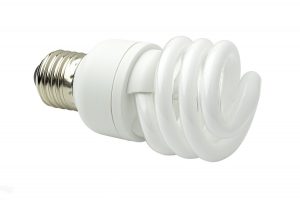 Due to the presence of mercury, in the United States and other countries, it has been banned to discard fluorescent lamps like ordinary garbage. This prevents them from appearing in landfills. However, because some recycling centers receive these lamps, many people may hide them in the trash. Damage to the environment: Because the phosphor contains a large amount of Hg during the filling of fluorescent tubes, the main source of its harm is its Hg vapor. Authoritative data show that when the mercury vapor reaches 0.04 to 3 mg, it will cause Humans are chronically poisoned within 2 to 3 months; an amount of 1.2 to 8.5 milligrams can induce acute mercury poisoning. If the amount reaches 20 milligrams, it will directly lead to animal death. Once mercury enters the body, it can quickly disperse and accumulate in kidneys, chests and other tissues and organs. Chronic mercury poisoning can lead to mental disorders, autonomic disorders, acute symptoms often headache, fatigue, fever, oral and digestive tract gums Aches, rotten bleeding, loose teeth, etc., some skin red spots, pimples, a few kidney damage, individual kidney pain, chest pain, dyspnea, cyanosis and other acute interstitial pneumonia.
Due to the presence of mercury, in the United States and other countries, it has been banned to discard fluorescent lamps like ordinary garbage. This prevents them from appearing in landfills. However, because some recycling centers receive these lamps, many people may hide them in the trash. Damage to the environment: Because the phosphor contains a large amount of Hg during the filling of fluorescent tubes, the main source of its harm is its Hg vapor. Authoritative data show that when the mercury vapor reaches 0.04 to 3 mg, it will cause Humans are chronically poisoned within 2 to 3 months; an amount of 1.2 to 8.5 milligrams can induce acute mercury poisoning. If the amount reaches 20 milligrams, it will directly lead to animal death. Once mercury enters the body, it can quickly disperse and accumulate in kidneys, chests and other tissues and organs. Chronic mercury poisoning can lead to mental disorders, autonomic disorders, acute symptoms often headache, fatigue, fever, oral and digestive tract gums Aches, rotten bleeding, loose teeth, etc., some skin red spots, pimples, a few kidney damage, individual kidney pain, chest pain, dyspnea, cyanosis and other acute interstitial pneumonia.
7. Extremely active
A research report published many years ago in the foreign magazine “Classic Therapy” claimed that if fluorescent lights in the classroom were removed, children’s activity could drop by 31%.
8. Melanoma
According to a report published in a foreign health journal in 1982, long-term exposure to fluorescent lights in the workplace increases the risk of malignant melanoma.
Comparison of LED lights and fluorescent lights
 1. Comparison of power saving and energy saving
1. Comparison of power saving and energy saving
Light efficiency is 50 ~ 70 lumens / watt; power efficiency is 65%; lighting efficiency is 60%; Luminous efficiency is 50 ~ 200 lumen / Watt. Generally, the luminous efficiency can reach 100Lm / W. Power efficiency is 95%; Lighting efficiency is 85%; The actual efficiency is about 58 lumens / watt. The actual efficiency of LED lamps is 3 times that of ordinary fluorescent lamps and 8 times that of ordinary incandescent bulbs.
2. Technical field comparison
The technology has matured and has become the most important, most common, and most used important light source in architectural lighting worldwide. LED technology is advancing with each passing day, its luminous efficiency is making amazing breakthroughs, and its prices are constantly decreasing. With the continuous improvement of LED technology, energy-saving lamps and incandescent lamps will inevitably be replaced by LED lamps.
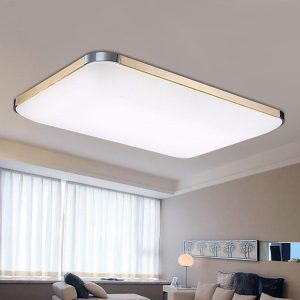 3. Service life comparison
3. Service life comparison
Fluorescent lamps have the disadvantages of easy-to-burn filament, thermal deposition, and light attenuation. If the fluorescent lamp is turned on or off frequently, it will turn black quickly and break down. The LED light source has a long service life and can withstand high-intensity mechanical shock and vibration. The average lifespan is 100,000 hours (this is the theoretical data of the laboratory, but the average LED lamps can reach at least 20,000-80000 hours. LED can work at high-speed switching. LED lamps have a service life of 5-10 years, which can greatly reduce Maintenance costs of lamps and lanterns, to avoid the pain of frequent lamp changes.
4. Cost comparison of lamps
The price of fluorescent lamps is low. The price of ordinary 40W lamp is 10 yuan. At present, the only disadvantage of LED fluorescent lamps is the high price. 15WLED lamp price. The cost of LED lamps is still falling year by year. Although the current price of LED fluorescent lamps is 100 yuan. It is about ten times as much as a fluorescent lamp. If it is related to its life, power saving and pollution-free, it is still cost-effective. Taking an office as an example, the cost of this LED fluorescent lamp can be saved after two years. The electricity cost saved in the future will become a pure income.
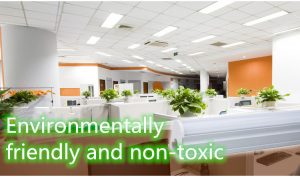 5. Comparison of luminous quality
5. Comparison of luminous quality
The fluorescent light is strong, slow to start, easy to flicker, change with AC power, the old lamp is obvious, and the vision is easy to fatigue. The color rendering index of fluorescent lamp is 65-80. Compared with LED, the light is soft and the spectrum is pure. Normal white light is often used. The color rendering index is high, and the color rendering index of LED fluorescent lamps is greater than 80. The color temperature range is wide, and it can provide almost any color temperature, and it can also provide red, green, blue, or any color of light. These are not possible with fluorescence.
6. Safety and reliability and environmental protection
Glass is fragile. A thick-diameter fluorescent lamp with a diameter of 36 mm contains 25 to 45 mg of mercury, and a thin-diameter fluorescent lamp with a diameter of 26 mm contains 20 mg of mercury. Generally, there is no pollution during use. The main reason is that the electric light source is discarded randomly after being discarded, which causes the mercury to diffuse into the air, which endangers human health and pollutes the environment. Due to the difficulty of recycling and the low value of recycling, plus many other disadvantages, the only way is to eliminate it.
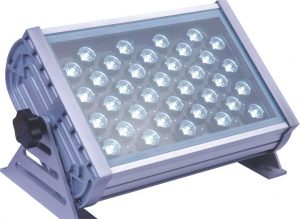 The small package of LED is not easy to be damaged. Environmental protection, no harmful substances of mercury. No light pollution and heat radiation. Environmental protection is not harmful to the human body. The assembly parts of the LED lamp can be easily disassembled, and can be recycled by others without recycling by the manufacturer. At present, the state pays more and more attention to energy saving and environmental protection issues, and has been vigorously promoting the use of LED lights.
The small package of LED is not easy to be damaged. Environmental protection, no harmful substances of mercury. No light pollution and heat radiation. Environmental protection is not harmful to the human body. The assembly parts of the LED lamp can be easily disassembled, and can be recycled by others without recycling by the manufacturer. At present, the state pays more and more attention to energy saving and environmental protection issues, and has been vigorously promoting the use of LED lights.
The light source of future -LED
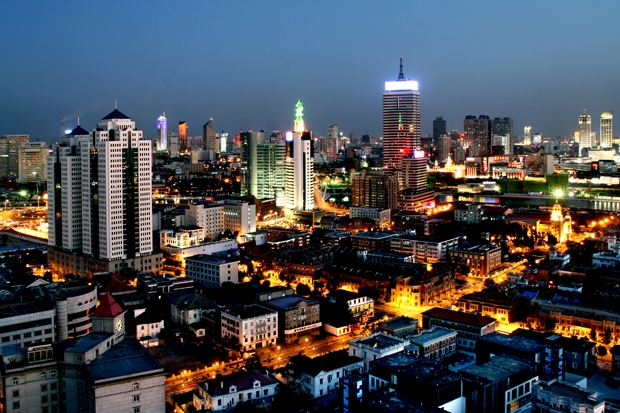 In the next few years, the government will continue to increase the intensity of LED energy-saving lighting and support from preferential policies. The potential of LED lighting market demand will be stimulated. LED are widely used in urban lighting, extending to areas such as urban landscape lighting, public lighting, commercial lighting, road lighting, and home lighting. Urban lighting street lights are replaced with LED energy-saving lights, and the pace of environmentally friendly LED energy-saving street lights replacing traditional street lights is accelerating. China’s “ten cities and ten thousand” semiconductor lighting application project has been fully launched, and the “21 city LED lighting” uses more than 10,000 street lamps. Street lights and 24-hour continuous use of LED tunnel lights will become the first key projects to be replaced. It is estimated that the demand for LED will be at least 4 billion each year in the future and increase year by year. By 2015, semiconductor lighting will expand to 30% of the general lighting market with a market size of 500 billion yuan. With the improvement of industrial technology, the cost of home and commercial LED products and the introduction of government energy-saving lighting subsidy policies will gradually become popular. In the next 3-5 years, with the rapid expansion of the global energy-saving lamp market, domestic energy-saving lighting manufacturers will usher in a rare opportunity for development. LED series products will become the main light source for future urban lighting.
In the next few years, the government will continue to increase the intensity of LED energy-saving lighting and support from preferential policies. The potential of LED lighting market demand will be stimulated. LED are widely used in urban lighting, extending to areas such as urban landscape lighting, public lighting, commercial lighting, road lighting, and home lighting. Urban lighting street lights are replaced with LED energy-saving lights, and the pace of environmentally friendly LED energy-saving street lights replacing traditional street lights is accelerating. China’s “ten cities and ten thousand” semiconductor lighting application project has been fully launched, and the “21 city LED lighting” uses more than 10,000 street lamps. Street lights and 24-hour continuous use of LED tunnel lights will become the first key projects to be replaced. It is estimated that the demand for LED will be at least 4 billion each year in the future and increase year by year. By 2015, semiconductor lighting will expand to 30% of the general lighting market with a market size of 500 billion yuan. With the improvement of industrial technology, the cost of home and commercial LED products and the introduction of government energy-saving lighting subsidy policies will gradually become popular. In the next 3-5 years, with the rapid expansion of the global energy-saving lamp market, domestic energy-saving lighting manufacturers will usher in a rare opportunity for development. LED series products will become the main light source for future urban lighting.

